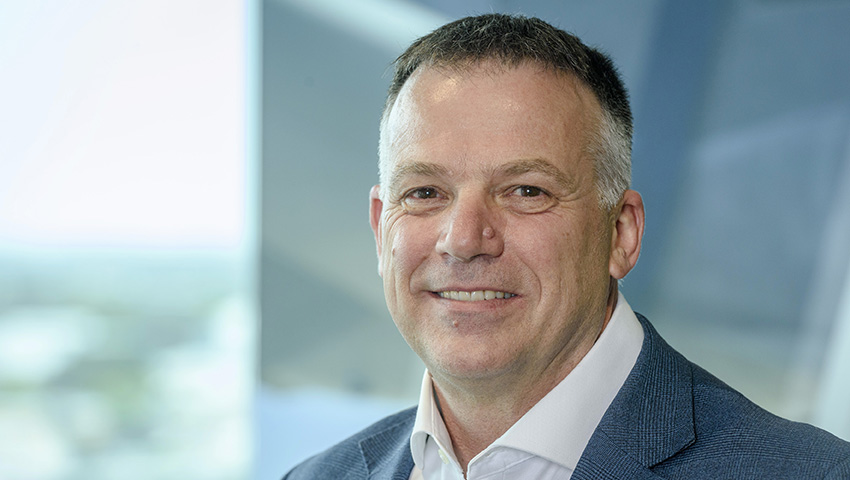Babcock Australasia is building upon its Maritime Engineering and Naval Architecture capability to establish the company as a regional hub in the Asia Pacific.
The acronym ETaP might be new to some, but the concept of Engineering Technology and Program Management is at the core of Babcock Australasia’s maritime regional hub strategy.
Babcock is building upon its Maritime Engineering and Naval Architecture capability to establish the company as a regional hub to build sovereign capability in the Asia Pacific.
A key part of its growth strategy, Babcock’s ETaP function is a critical component to this as the company enters its next sustainable growth phase in the region.
“Babcock’s ETaP function ensures we have access to the advanced technologies we require in Australasia to improve the services and products we offer to customer, build sovereign capability and support our growth strategy,” said Brad Yelland, Babcock’s Executive Director Engineering & Technology.
“This includes leveraging and transferring of technologies from the wider Babcock enterprise, transfer of technologies from Australian research and SME organisations, as well as our internal development of technologies.”
Yelland, a defence industry veteran of more than 30 years, joined Babcock in September 2021 to spearhead development of the company’s engineering and technology capability and development in the Asia Pacific region.
“My role is to grow the technical and programmatic capability that Babcock requires, not just in delivering its current contracts, but to prepare for the future – ensuring we have the capability in place to address the evolving dynamics of the region,” said Yelland.
“With the signing of the AUKUS Alliance, for example, Australia is going to need industry partners to support the transition to nuclear powered submarines.
“Babcock has decades of experience in the safe operation and management of ashore support infrastructure required to support a nuclear submarine fleet.
“Babcock has also supported the UK’s civil nuclear industry and the Royal Navy in its nuclear submarine design, acquisition, sustainment, disposal, training and regulatory compliance programs for more than 50 years,” he said.
Operating the UK’s only licensed facility for refitting, refuelling and defueling nuclear submarines, Babcock sustains 100 percent of the Royal Navy’s nuclear-powered submarine fleet, including the delivery of through-life support of the Vanguard, Trafalgar and Astute Classes, and now also LOTE of the Vanguard class.
Babcock also operates HMNB Clyde and HMNB Devonport – two of the UK’s three naval bases, which comprise the operating ports of the Royal Navy’s submarine fleet.
Yelland said ETaP will play a key role in building Babcock’s local nuclear safety and stewardship capability in Australia.
“By drawing on our decades of experience in the UK, and bringing complementary capabilities together, the benefits to Australasia will be enormous,” said Yelland.
“Babcock has the capacity to invest further in Australia and share our proud history of nuclear technical capability stewardship, safety leadership and engineering and infrastructure management.
“It provides yet another opportunity to transfer valuable skills, expertise and intellectual property from our international operations to enhance Australia’s sovereign Defence capability.
“Some notable programs we’ve drawn from our global enterprise includes the critical systems we design and support for the Collins class submarines, the High Frequency Communications technology for the New Zealand Fixed High Frequency Radio Refresh program and the Enhanced Defence High Frequency Communications System for the Australian Defence Force.”
Yelland said engineers will be critical to how Australia meets its defence and security challenges in the decades ahead.
“Science, engineering and technology are at the heart of growing our nation’s defence capability, and there’s no doubt that people will be critical to this capability.
“That’s why Babcock is investing in our future workforce and supporting emerging talent in science, technology and engineering.
“We are focused on providing Future Talent pathways for graduates, work experience students, interns and apprentices through our Early Careers programs.
“We also recognise the value of our people of working in an inclusive environment where differences are appreciated, where everyone can thrive, give their best and fulfil their potential.
“Babcock understands the importance of broadening our resource pool so we have a diversity of thought – different ways of looking at the same problem always lead to the best results.
“We are committed to being a workforce that reflects the rich diversity of wider society and to be a business that inspires and shapes the communities in which we operate.”
Yelland added that an important part of planning for the future was establishing relationships with SMEs, universities and the Defence Science and Technology (DST) Group to help establish a technology driven capability in country.
“Internationally, Babcock in the UK is investing in advanced technologies in various areas that we can not only leverage for Australia but can use as the basis for growing further capability in Australia with SMEs and research partners.
“Our strategy is a combination of embedding our Australian teams into our UK programs, build up their skills, expertise and experience to bring to Australia, as well as bringing our UK nuclear submarine teams to Australia to further develop the capability here,” said Yelland.
 Login
Login






